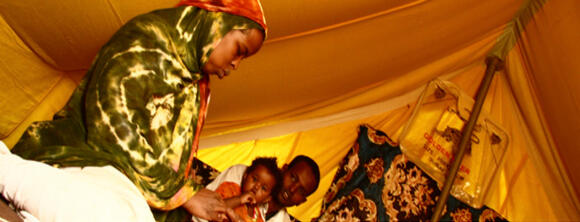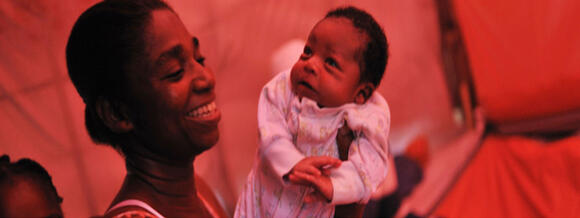-

Already contending with political instability, gang violence that has displaced thousands and COVID-19, Haiti now faces the cruel aftermath of the 14 August 7.2-magnitude earthquake that has so far claimed 1,400 lives and injured more than 6,900 while hundreds remain missing, according to OCHA. The epicentre was recorded about 125 kilometres west of the capital, Port-au-Prince; the southern and western parts of the country were hardest hit. Hospitals were damaged or destroyed, overwhelming those still standing. Needs for food, shelter, safe water, sanitation and hygiene and medicines will continue to grow. Tropical Storm Grace has complicated relief efforts here, which is under a one-month national state of emergency. Cartagena Street (above) is in the seaport and commune of Les Cayes, which bore a significant brunt of the quake. Buildings including schools, hospitals and churches were flattened or smashed, roads were rendered impassable and more than 37,000 homes have been destroyed and 46,000 damaged throughout affected areas, according to the Haitian Civil Protection General Directorate. Updated 18 August: The death toll stands near 2,000 and injured approaching 10,000. Almost 61,000 homes have been destroyed and more than 76,000 damaged in the three most affected areas. © UNFPA Haiti/Ralph Tedy Erol
-
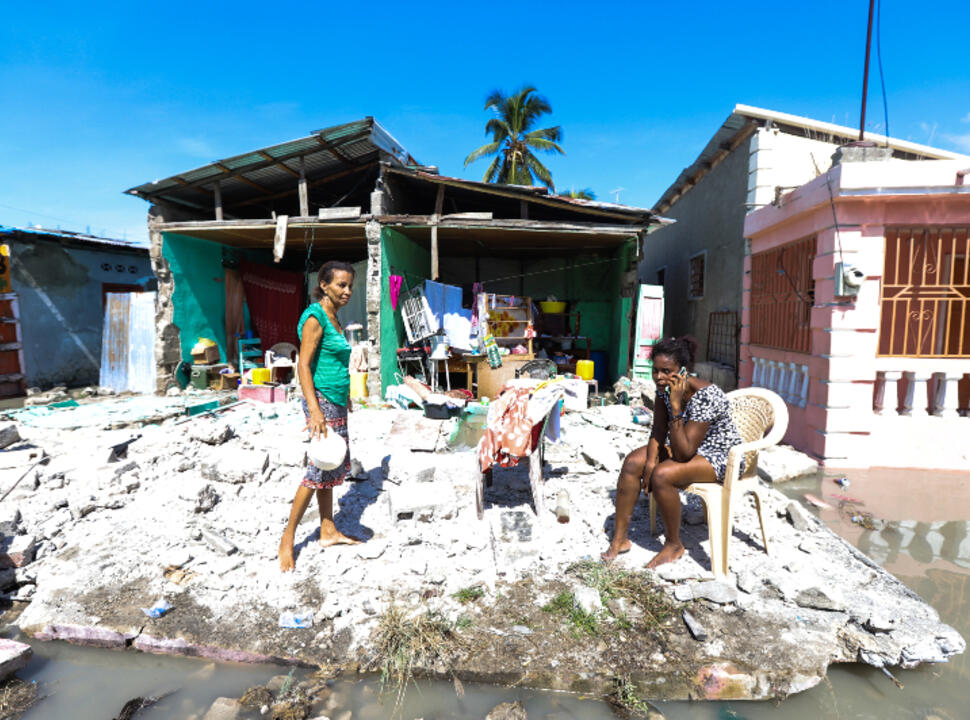
Families try to salvage anything they can from beneath the rubble. Remote communities closer to the epicentre are feared to be devastated. An estimated 1.2 million people have been affected; the 2010 earthquake affected three million people. © UNFPA Haiti/Ralph Tedy Erol
-
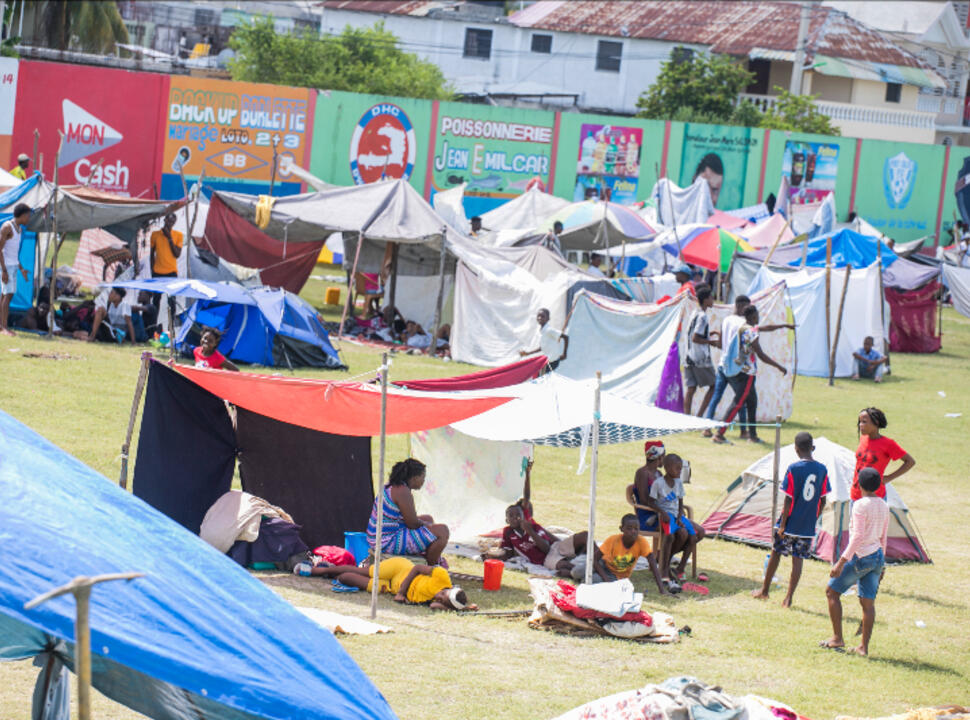
Hundreds of families have settled at football field Land des Gabions in Les Cayes. Tens of thousands of homes have been leveled, leaving many homeless. Some 19,000 Haitians are already displaced due to gang violence. Further displacement coupled with compromised access to health care is fueling concern on containing COVID-19. Gender-based violence is another worry, so protection services must always be part of emergency response. © UNFPA Haiti/Ralph Tedy Erol
-
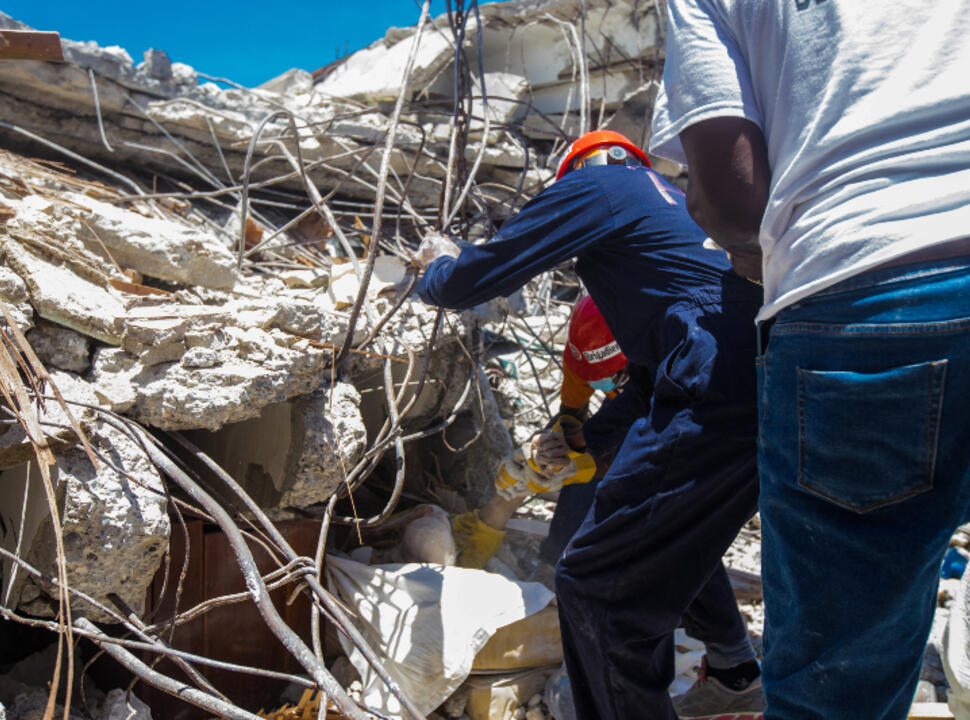
Workers at the site of the Catholic bishop's residence extricate a victim of the collapse in Les Cayes. Efforts by search-and-rescue teams and volunteers are ongoing days after the disaster. © UNFPA Haiti/Ralph Tedy Erol
-
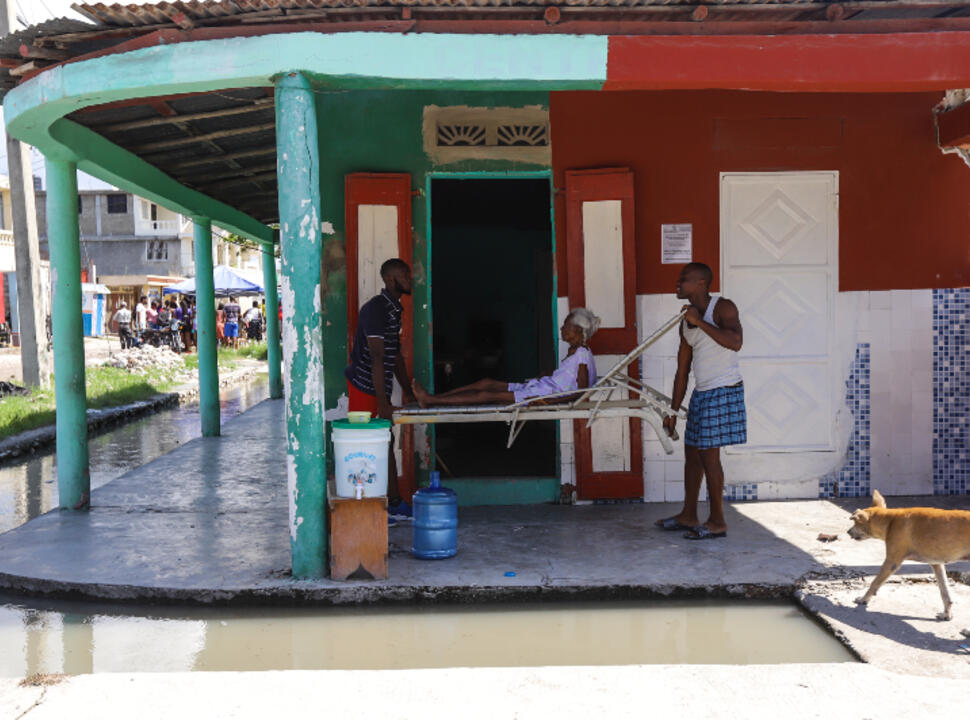
A woman is evacuated by family members at Immaculate Conception Hospital in Les Cayes. Hospitals still standing are in desperate need of personnel and medical supplies. © UNFPA Haiti/Ralph Tedy Erol
-

With houses in ruins, residents of Gelée, a village in Les Cayes, are leaving for temporary shelters. Gangs and road blockages have hampered relief efforts, and humanitarian partners are exploring alternatives, including by sea, to deliver aid. © UNFPA Haiti/Ralph Tedy Erol
-
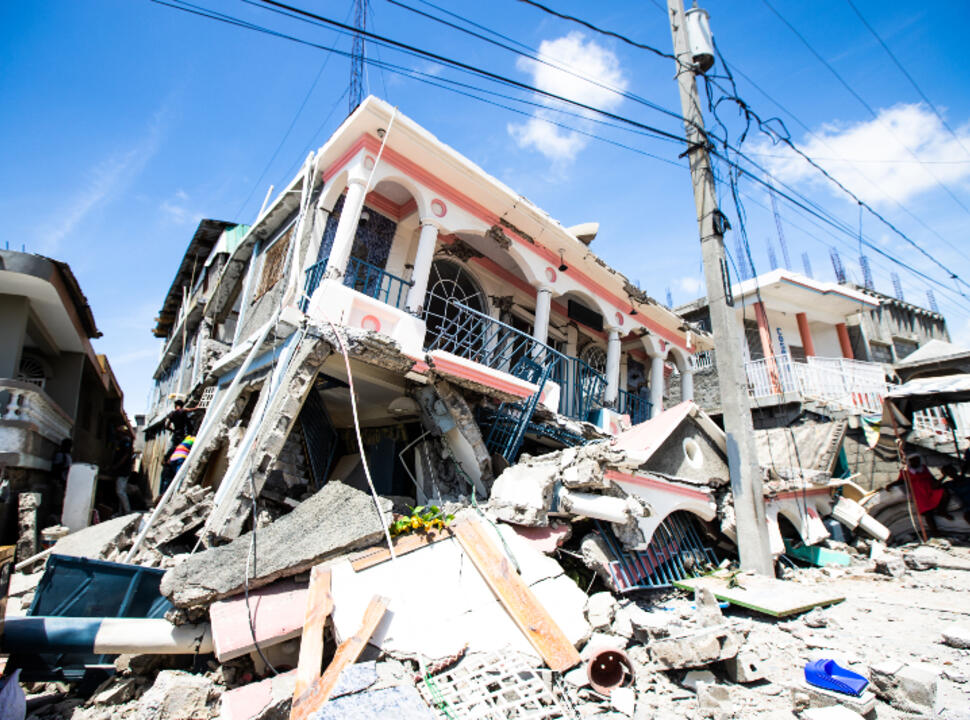
The earthquake toppled buildings on Boulevard des 4 Chemins in Les Cayes, which is in the Sud department, one of the three most heavily damaged areas. The other two are Grand’Anse and Nippes departments. © UNFPA Haiti/Ralph Tedy Erol
-
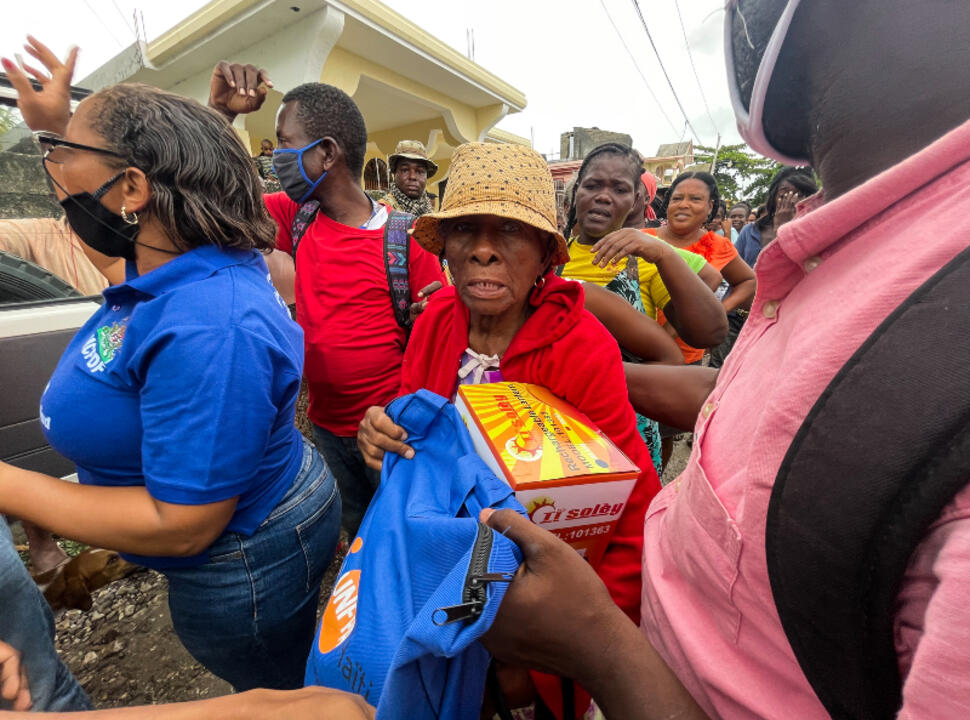
UNFPA distributed solar lanterns and dignity kits that include basic hygiene supplies like soap, toothbrushes, water purification tablets, underwear, menstrual pads, flashlights, hand sanitizer and masks to families in Les Cayes. © UNFPA Haiti
- Home
- Slideshows
- Devastating 7.2-magnitude earthquake batters southwestern Haiti
Devastating 7.2-magnitude earthquake batters southwestern Haiti
17 August 2021
